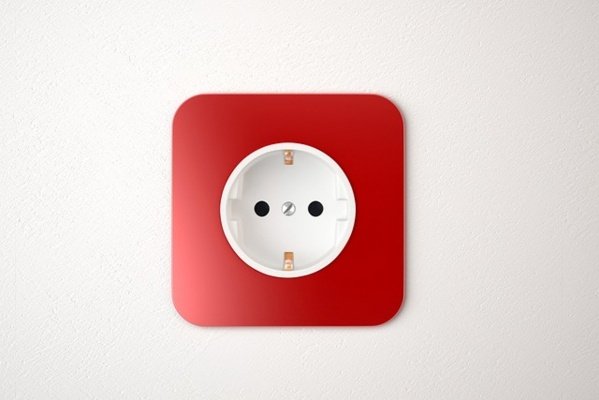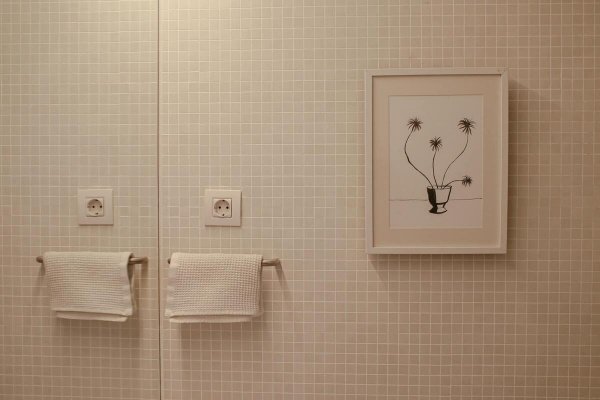
Plugs & Outlet Type – Italy
Plug Types for Italy – Which Travel Adapter Do You Need?
Before you start packing your bags for your grand Italy trip (which, by the way, lucky you), let’s talk about something that might not be as exciting as planning your itinerary. Don’t be fooled though as this is super important: plug types for Italy.
Trust me, you don’t want to arrive in Rome only to find out your phone charger doesn’t fit in the socket. You don’t want to end up like me, roaming the streets late at night to find the correct plugs instead of soaking up your first night in the country. I’ll break down what you need to know to keep your devices powered up in Italy. Let me help you run through the kinds of plugs you’ll encounter, voltage differences, and which adapters will be your best buddies.

I have been travelling now for nearly three years. I left my 9-5 job in the UK and have never looked back. The one thing I would always advise anybody considering a nomad lifestyle is to just go for it! It will change you for the better. Music is my passion and I love to attend concerts of any variety but I do have a sweet spot for rock music.
Affiliate Disclosure: Some of the links on our site are affiliate links, meaning, at no additional cost to you, we may earn a commission if you click through and make a purchase. This helps us to continue providing valuable content and supports our efforts in bringing the travel community together. We only recommend products and services we believe in and think you’ll find useful. Complete details are included in our affiliate disclaimer. Thank you for your support!
In a Hurry? Here's our Key Info for This Article
- Italy's electrical system operates at 230 volts, which may be incompatible with devices from countries using 100V to 120V.
- Type C two-pin plugs are universally compatible with all Italian sockets, potentially eliminating the need for additional adapters.
- It's crucial to check the voltage rating on your device's plug or adapter to ensure compatibility with Italy's electrical system.
- Travel-specific devices rated up to 240V can be a safe alternative for high-powered appliances like hair dryers and curling wands.
- For devices with three-pin plugs, consider a Type L adapter or USB charging options.
- Adapters can be purchased before your trip or locally upon arrival in Italy at stores like Euronics, Unieuro, and MediaWorld.
- Ensuring device compatibility and using the right adapter can prevent electrical mishaps and inconveniences while traveling in Italy.
Understanding Italy’s Electrical System and Plug Standards
You might be wondering, “How different can plugs really be?” Well, my friend, Italy’s got its own unique setup. It’s important to understand before you start plugging in your devices because we always want to be safe. Knowing this stuff isn’t just about keeping your hair dryer working; it’s about making sure you don’t accidentally fry your expensive electronics or god forbid, even yourself!
Italy’s Voltage and Device Compatibility
Italy uses a higher voltage (230V) than the US and Canada (typically 120V). This means you might need an adapter to ensure your electronics work properly. Don’t fret though — many modern gadgets and electronic devices can handle this voltage.
However, some other appliances (think hair dryers or electric shavers) or older electronics may not be. The label is a great indicator of your device’s voltage so don’t forget to always check that. If you see something like “100–240V,” you’re all good. If not, you may want to pick up a voltage converter to avoid the bummer of a power surge.


Socket Types in Italy Explained
There’s a bit of variety when it comes to sockets in Italy. Familiarize yourself with the voltage situation, and it’ll be a breeze! Italy primarily uses three types of sockets: Type C, Type L, and Type F. Here’s a quick rundown for each of them:
| Socket Type | Features |
|---|---|
| Type C | The most common socket used all over Europe. It’s got two round pins and is often called the “Euro plug.” |
| Type L | A socket unique to Italy that has three round pins in a line. There are two versions – one with smaller holes for 10A and one with larger holes for 16A. |
| Type F | A less common socket, but you still might encounter. Looks similar to Type C but with additional grounding clips on each side. |
Good news! Most modern buildings in Italy have sockets that accept these different types of plugs. Convenient right? For instance, if you have a Type C plug, you’ll be able stick it into a Type L socket. This doesn’t mean you shouldn’t bring some adapters though, especially if you’re visiting more old-fashioned areas. You wouldn’t want to be caught without juice.
Identifying Compatible Devices
Many modern electronic devices, as we mentioned earlier, are built to handle “dual voltage.” They should be able to handle 110-120V and 220-240V systems without any trouble at all. This is usually indicated in your device’s label or power adapter like “Input: 100-240V, 50/60Hz”. If you see this, you’re in luck! Your device will work in Italy with just a simple plug adapter. Common dual voltage devices include most of the usual travel essentials such as:
- Smartphones and tablets
- Laptops
- Digital cameras
- E-readers
- Many battery chargers
A simple indicator to know if your devices needs a converter is to, you guessed it, check the label. If only mentions 110V or 120V, you need a converter to use these. I highly suggest bringing a converter, just in case.
Choosing the Right Adapter To Bring
Save yourself a lot of headaches by knowing which adapter to bring for your Italian adventure. Right off the bat, I suggest bringing a Type C adapter. It is a must and will fit into the majority of sockets you’ll encounter. It’s extremely compact, you can buy it almost everywhere and works with so many devices.
For ultimate peace of mind (and this is the smart way to go!), grab a universal adapter. These nifty adapters often come with slide-out pins that can adjust to Type C, L, and F sockets. You will not only be able to use these in Italy but in other countries too! There are types of these adapters with USB ports to let you charge more devices in a single outlet. Some of these even come with built-in voltage conversion, which also solves an incompatible voltage problem.
A tip for when you’re shopping for these adapters is to keep an eye out for those that meet international safety standards and have built-in fuse protection already. It’s tempting sometimes to go for the cheaper ones but believe me, this is going to be a worthy investment.
Where to Purchase Plug Adapters and Converters
Here are some great options for purchasing plug adapters and converters:
| Store Type | Stores | Location | Notes |
|---|---|---|---|
| Online retailers | Amazon, REI, Best Buy | Online | Offers a wide selection, compare prices, read reviews, and have items delivered to your doorstep. |
| Travel stores | Eagle Creek, Travelpro | USA | Specializes in travel gear, staff who can help you choose the right adapter or converter. |
| Electronics stores | Best Buy, Apple Store | USA, Worldwide | Typically stock travel adapters in their accessories sections. |
| Airport shops | Worldwide | International airport stores selling travel essentials, including plug adapters. | |
| Italian shops | Euronics, Mediaworld, Rinascente | Italy | Adapters are usually available at electronics stores, some pharmacies, and tourist shops in major Italian cities |
Conclusion
Wrapping up our little guide here, it’s clear that a little preparation goes a long way in ensuring a smooth, well-connected Italian adventure. I hope to have helped you a bit in understanding Italy’s electrical system, knowing which adapters you need, and identifying which of your devices are compatible. Consider yourself super-powered for this trip!
Ultimately, our main goal in learning these (even though they might not look important at first glance), is less worrying and more enjoyment in Italy! Now you can go pack your bags and charge your devices to a 100%, so you can have the perfect trip. Buon viaggio!
Plug Types for Italy FAQ
Italy uses three different socket standards: Types C, L, and F. However, the two-pin Type C plug is the most versatile and fits into all Italian socket types.
Italy’s electrical system has an electricity supply of 230 volts. Most small electronics like cell phones and laptops have a voltage range between 100V and 240V, making them safe to use. High-powered appliances may require a converters or dual voltage/travel versions.
Devices with two-pin plugs typically require a Type C adapter, which fits all Italian sockets. However, we highly recommend getting a universal adapter that you can use not only in Italy but worldwide.
You can purchase plug adapters and converters at various outlets in the United States, such as Target, Walmart, or specialized travel and electronics stores. Online platforms like Amazon also offer a wide range of adapters suited for Italian outlets. For last-minute purchases or replacements, adapters can be found in major cities and electronic retail chains like Euronics and MediaWorld in Italy.
To identify compatible devices, examine the small print on the device or its power brick to determine if it’s safe to use in Italy. Consider purchasing dual voltage or travel versions of high-powered devices if necessary, and always consult device manuals or labels for accurate information on voltage compatibility.









